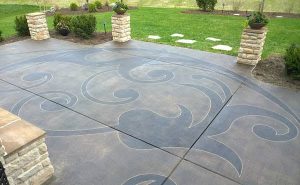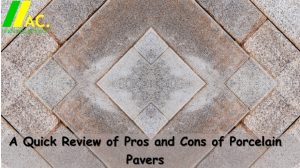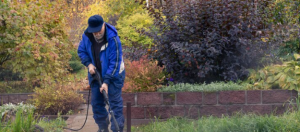Why Void Filling and Concrete Lifting Prevent a Costly Bill
When it comes to addressing uneven concrete or foundation settlement, polyurethane foam leveling & lifting is a proven solution. This technique not only fills voids beneath slabs but also lifts the concrete back into place, preventing further damage and restoring stability. Homeowners who invest in these methods often avoid costlier repairs down the line, making them a smart preventive measure.
Foundation issues in homes are unfortunately very common, especially in older properties. Over time, soil settling, erosion, groundwater changes, and other factors can cause foundations to shift and settle unevenly. This leads to cracks in walls and ceilings, sticking doors and windows, sloping floors, and a range of other problems. If left unaddressed, foundation issues will continue to worsen and can cause severe structural damage.
Two effective methods for repairing foundation settlement are void filling and concrete lifting. Void filling involves injecting structural foam or grout material into voids beneath concrete slabs. This lifts and levels the slabs back to their proper elevation. Concrete lifting uses hydraulics to gently raise and re-level sunk sections of the foundation. Both techniques can successfully stabilize and restore sunken foundations, filling spaces beneath them to provide proper structural support.
Causes of Foundation Settling
Foundation settling occurs for a variety of reasons, but some of the most common causes include:
- Soil erosion: Over time, soil can erode or wash away, causing voids underneath the foundation. This allows the foundation to sink and settle unevenly. Factors like improper drainage, leaky pipes, or changing weather patterns can speed up soil erosion.
- Poor compacting: When a home is constructed, the soil underneath needs to be well-compacted to create a solid base. If the soil is not properly compacted, it is more prone to settling and compression. This can lead to cracks and sinking years later.
- Water damage: Water is one of the biggest threats to foundation stability. Too much moisture in the soil causes it to expand, putting upward pressure on the foundation. As the soil dries and contracts, voids are left beneath the foundation, causing it to settle. Sources of excess water include broken pipes, poor drainage, and heavy rains.
Signs of Foundation Problems
Foundation issues often manifest gradually over time through visible signs in the home. Watch for these common indicators that your foundation may be settling:
- Cracks in walls and ceilings: Small fissures may appear in walls, ceilings, and around door and window frames. As foundation settling worsens, larger, jagged cracks can form. Cracks tend to get progressively wider over time if not addressed. These cracks, along with uneven floors and doors or windows that stick, can indicate more severe issues with the foundation. Another common sign is bowing or leaning foundation walls, which often result from soil pressure or water buildup outside the structure. Recognizing these warning signs early is crucial to prevent further damage and ensure the safety and stability of your home.
- Sticking doors and windows: Doors that stick or won’t close properly can signal foundation movement. Windows sticking and not opening smoothly can also indicate problems. This occurs as the house structure shifts out of the square.
- Uneven floors: Floors that are visibly sloped or uneven often stem from a sinking foundation. There may be high and low spots. Problems are especially apparent with tile or wood floors. Flooring can crack or separate as the underlying support sinks.
Cost of Foundation Repairs
Foundation repairs can be extremely costly, often ranging from $4,000 to over $20,000, depending on the severity of the issue and type of foundation. The average cost to repair a settling foundation is around $8,000 to $12,000. Major foundation repairs, like installing push piers, can cost $10,000 to $15,000. Completely replacing a foundation can cost $25,000 or more.
Some of the factors that influence the cost of foundation repairs include:
- Type of foundation: Repairs for slab foundations are typically less expensive than basement foundations.
- The extent of damage: Minor settling may only require minor crack repairs for $500–$1,000, whereas extensive damage like large cracks, sinking, or rotation requires major underpinning work.
- Accessibility: Accessing foundations with crawlspaces or basements is easier and cheaper than accessing foundations without easy access. Digging and excavating increase costs.
- Foundation material: Concrete is cheaper to repair than brick or stone.
- Home size: Larger homes require more foundation work.
- Location: Where labor and material costs are high, prices are higher.
For concrete lifting in Edmonton, consider getting in touch with The Concrete Doctors – serving Edmonton and surrounding areas.
Benefits of Void Filling
Void filling is a process that involves injecting a structural foam or polyurethane resin underneath concrete slabs to stabilize and level foundations. This is an effective solution for addressing voids or hollow spaces under foundations that are causing sinking, cracking, and other structural issues.
Some of the key benefits of void filling include:
- Stabilizes and levels foundations: By filling voids beneath concrete slabs, void filling stabilizes and raises settled sections to restore a level foundation. This corrects uneven floors, sticking doors, and other issues caused by foundation settling.
- Prevents further damage: Once voids are filled and the foundation is stabilized, it helps prevent additional sinking or cracking. This protects the structural integrity of the foundation and prevents the need for more extensive repairs down the road.
- Less invasive: Void filling is considered a minimally invasive process since it does not involve excavating or replacing foundation slabs. Access holes are drilled through the concrete to pump material underneath.
- Quick process: Void filling can usually be completed in one day, and slabs can be walked on shortly after injections. This means minimal disruption to homeowners.
Void filling is an effective solution for stabilizing and leveling settled foundations, preventing further damage, and avoiding the need for full foundation replacement. When done properly, it can restore structural integrity and prevent future issues.
Benefits of Concrete Lifting
Concrete lifting is an effective solution for releveling and raising settled concrete slabs. It involves injecting a high-density polyurethane foam beneath the slab to gently lift and relevel it. This process can raise settled concrete by 1 inch or more, eliminating trip hazards and restoring proper drainage.
Unlike slab replacement, concrete lifting is far less invasive and expensive. Holes are drilled into the slab so the foam can be pumped underneath. The foam expands to fill voids and lift the concrete back into place. The process takes only a few hours with minimal disruption to the area.
Overall, concrete lifting is an affordable and effective solution for raising settled slabs and preventing further damage. It restores safety and proper drainage while avoiding the high costs and hassle of full slab replacement.
Hiring a Concrete Repair Contractor
When it comes to void filling and concrete lifting, it’s important to hire a professional concrete repair contractor that specializes in foundation repair. Attempting foundation repairs without proper expertise and techniques can lead to further damage and added costs.
A concrete repair contractor has an extensive training and experience in assessing foundation problems and determining the best repair approach. They use advanced techniques and equipment to accurately identify voids beneath slabs and target injection points. This precision helps ensure voids are properly filled to lift and level the concrete.
Final Assessment
Preventing foundation issues through proactive maintenance like void filling and concrete lifting provides tremendous value compared to ignoring problems until major foundation repairs are needed. This article has covered the common signs of foundation problems, such as cracks in walls and ceilings, sticking doors and windows, and uneven floors. Left unaddressed, these issues tend to worsen over time, leading to serious structural damage and exponentially higher repair costs.
The bottom line is that void filling, concrete lifting, and other proactive measures represent a wise investment. They provide peace of mind by preventing small issues from becoming major headaches. Homeowners who take preventative steps can rest easy knowing their foundation is supported for years to come. When it comes to home maintenance, an ounce of prevention truly is worth a pound of cure. Visit our website for more.


![Finding Reputable Concrete Coating Companies near Me Are you in search of high-quality concrete coating services for your residential or commercial property? Look no further than local Google ads for concrete coating! In today's fast-paced world, finding reputable companies can be a daunting task. With the help of Google ads, you can easily locate trustworthy concrete coating businesses in your area. In this blog post, we'll explore the benefits of utilizing local Google ads for concrete coating and how Creatively Innovative can help transform your space with their innovative solutions. The Power of Local Google Ads for Concrete Coating Local Google ads have revolutionized the way businesses connect with potential customers. With just a few clicks, users can find a wide range of services tailored to their specific needs and location. When it comes to concrete coating, Google ads play a crucial role in showcasing the expertise and reliability of companies in the industry. By targeting local keywords such as "concrete coating near me" or "best concrete coating company in [your city]," businesses can reach individuals actively searching for their services. This targeted approach not only increases visibility but also ensures that potential customers receive relevant information when they need it most. Why Choose Creatively Innovative? When it comes to concrete coating, Creatively Innovative stands out as a leader in the industry. With years of experience and a dedication to excellence, they have earned a reputation for delivering exceptional results. Whether you're looking to enhance the aesthetic appeal of your home or protect your commercial space, Creatively Innovative has the expertise and resources to exceed your expectations. What Sets Creatively Innovative Apart? 1. Innovative Solutions: Creatively Innovative is committed to staying ahead of the curve with cutting-edge techniques and materials. Their team of experts continuously explores new technologies to ensure that clients receive the best possible outcomes. 2. Exceptional Customer Service: From the initial consultation to the final inspection, Creatively Innovative prioritizes customer satisfaction every step of the way. Their friendly and knowledgeable staff are always available to address any questions or concerns you may have. 3. Customized Approach: No two projects are alike, which is why Creatively Innovative takes a personalized approach to every job. Whether you have specific design preferences or budget constraints, they will work with you to create a customized solution that meets your needs. 4. Attention to Detail: Quality is never compromised at Creatively Innovative. They take pride in their meticulous attention to detail, ensuring that every aspect of the project is completed to the highest standards. How to Find Creatively Innovative through Local Google Ads To discover Creatively Innovative and other reputable concrete coating companies in your area, simply perform a quick search using relevant keywords on Google. Look for ads that appear at the top of the search results, as these are typically paid placements by businesses looking to connect with potential customers. Once you've found Creatively Innovative's ad, click on it to learn more about their services, customer reviews, and contact information. You can also visit their website directly by clicking on the ad's link, where you'll find additional details about their offerings and portfolio of past projects. Conclusion In conclusion, local Google ads for concrete coating, especially those targeted towards local businesses, are an invaluable resource for individuals seeking reliable and professional services. By leveraging the power of targeted advertising, businesses like Creatively Innovative can connect with customers in need and showcase their expertise in the field. Whether you're looking to enhance the beauty of your home or protect your commercial space, local business Google ads make it easier than ever to find reputable concrete coating companies near you. So why wait? Start your search today and transform your space with the help of Creatively Innovative!](https://www.theliveschedule.com/wp-content/uploads/2024/02/Best-Concrete-Contractors--300x193.png)


